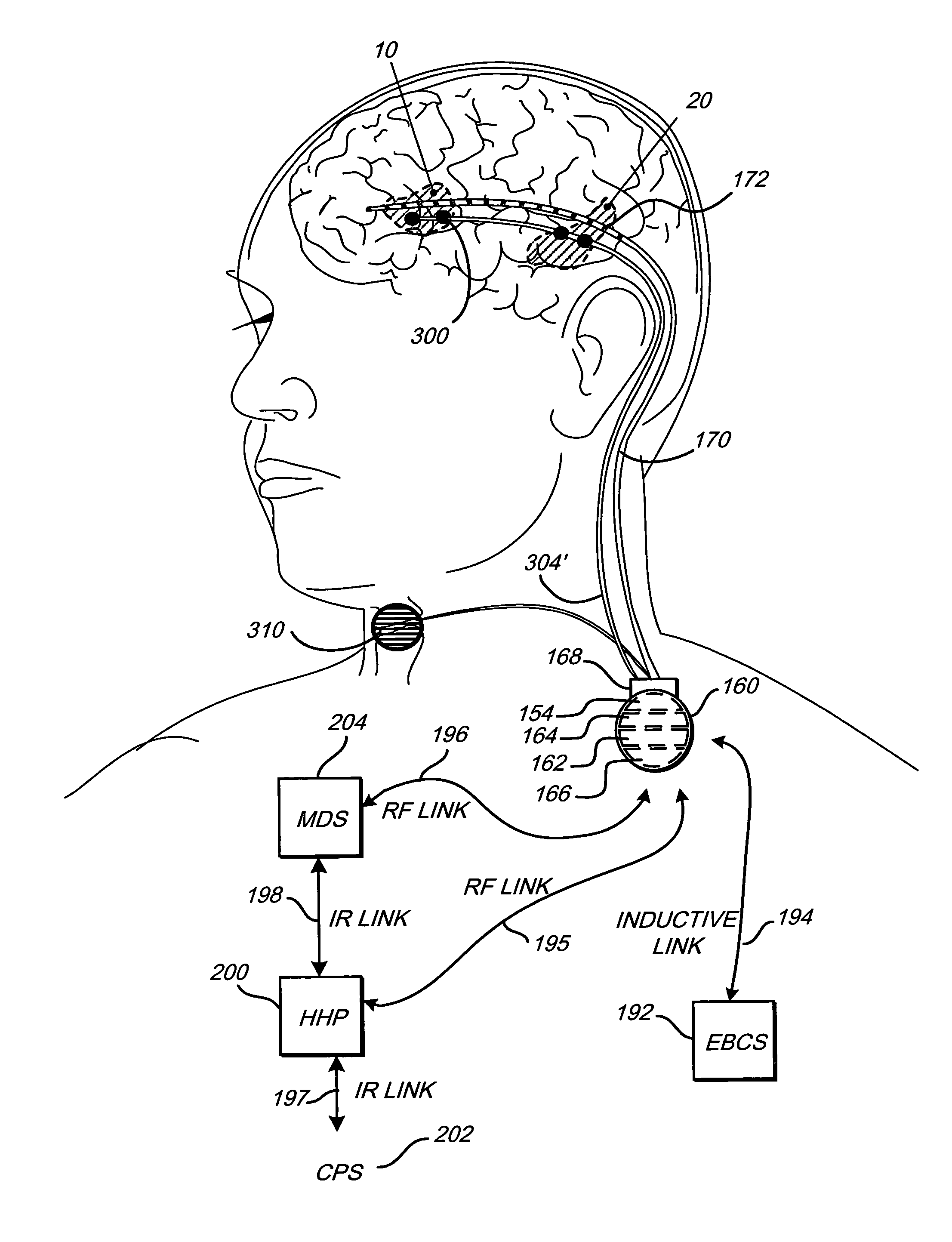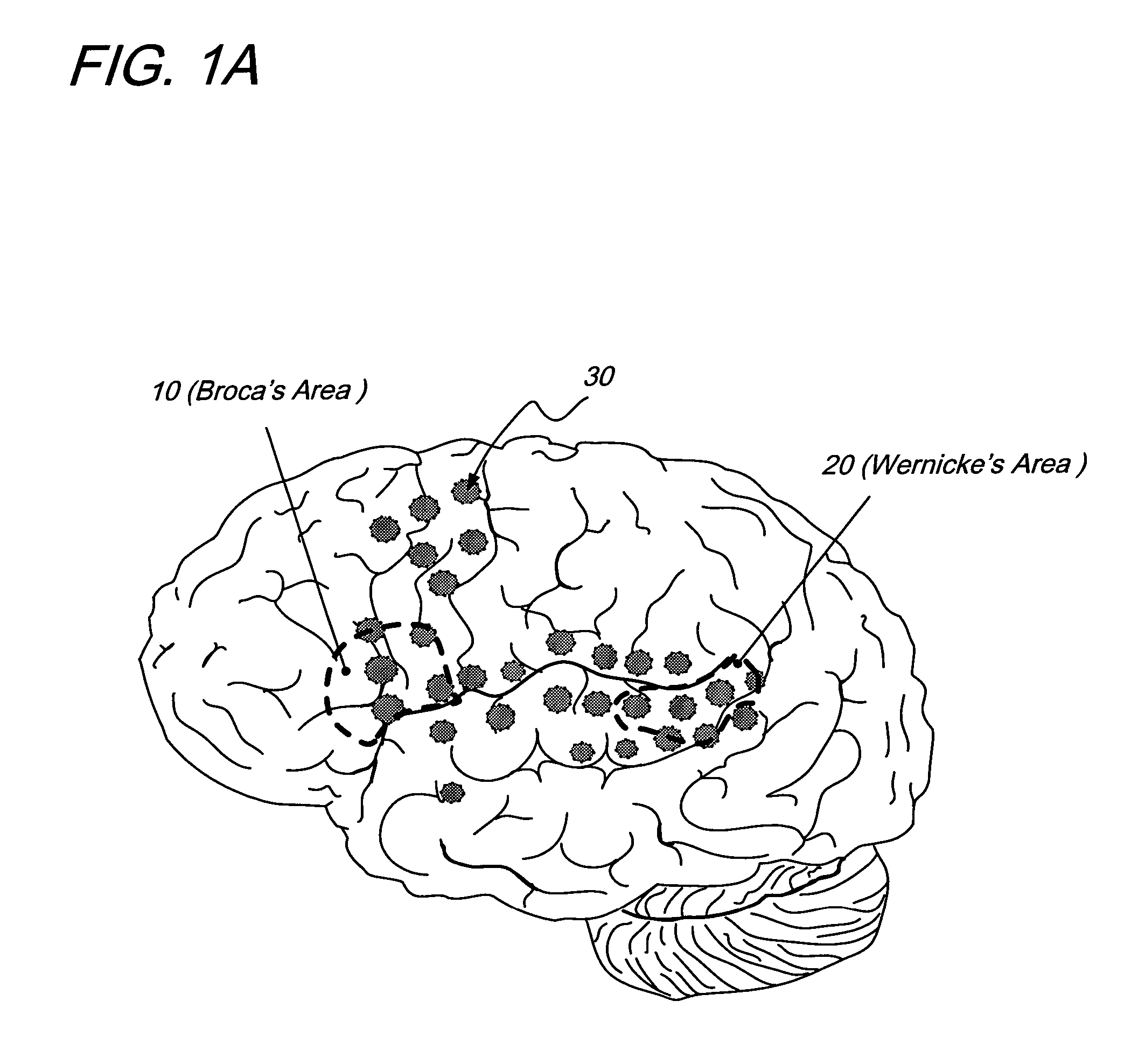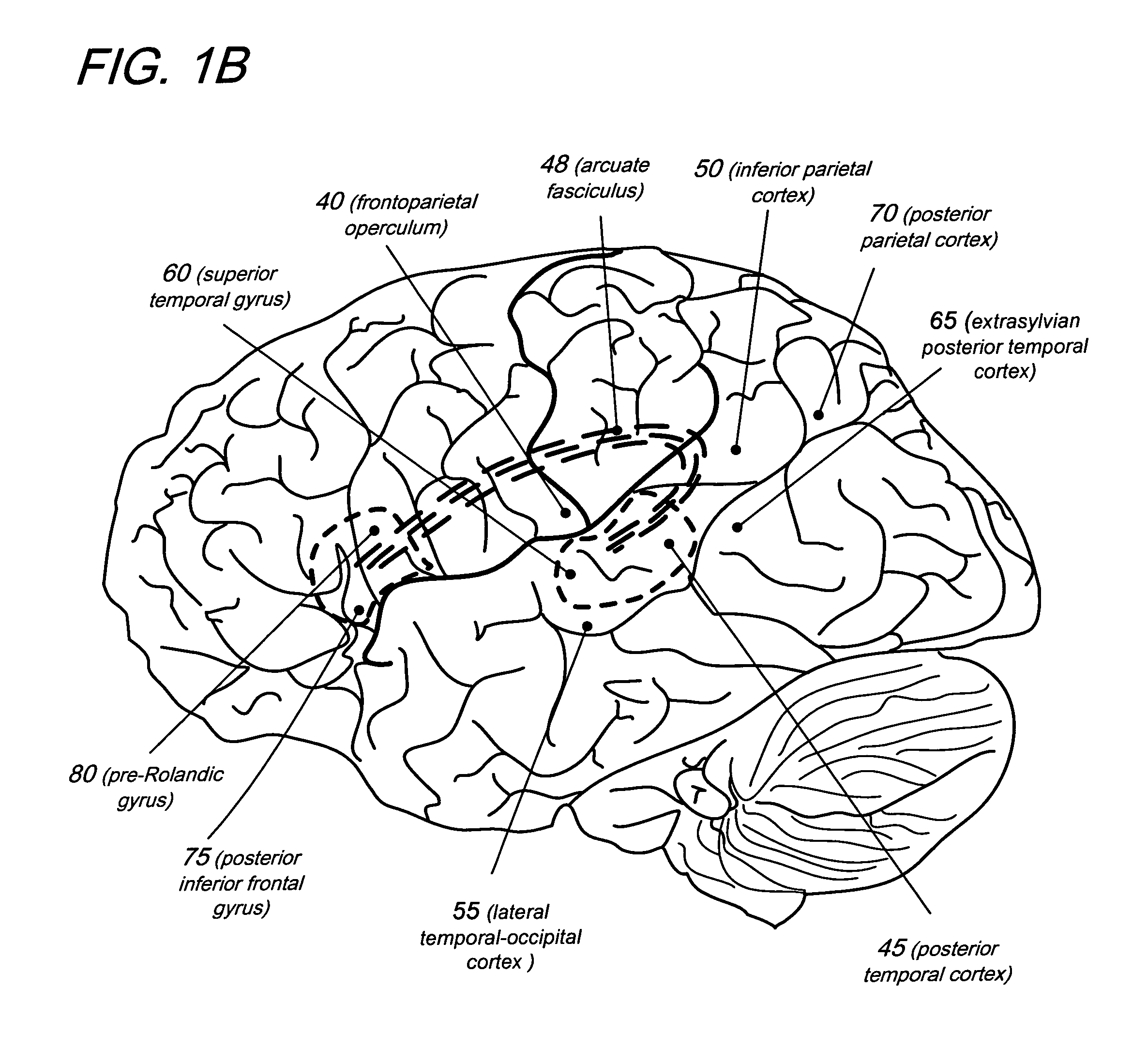Treatment of aphasia by electrical stimulation and/or drug infusion
a technology of electrical stimulation and aphasia, which is applied in the direction of intravenous devices, other medical devices, therapy, etc., can solve the problems of affecting speech comprehension, oral and written communication, affecting the ability of patients to use language, and affecting the comprehension of speech, so as to increase or decrease the level of an inhibitory neurotransmitter, increase or decrease the excitement
- Summary
- Abstract
- Description
- Claims
- Application Information
AI Technical Summary
Benefits of technology
Problems solved by technology
Method used
Image
Examples
Embodiment Construction
[0053]The following description is of the best mode presently contemplated for carrying out the invention. This description is not to be taken in a limiting sense, but is made merely for the purpose of describing the general principles of the invention. The scope of the invention should be determined with reference to the claims.
[0054]ABBREVIATIONS: The following abbreviations are used throughout this application:
[0055]
CPSa clinician programming systemDBSDeep Brain StimulationEBCSexternal battery charging systemfMRIfunctional MRIHHPhand held programmerIPGimplantable signal / pulse generatorMDSmanufacturing and diagnostic systemMRIMagnetic Resonance ImagingrCBFregional cerebral blood flowRFradio-frequencySCUsystem control unitsTMStranscranial magnetic stimulation
[0056]The invention disclosed herein provides systems and methods for applying electrical stimulation and / or introducing one or more stimulating drugs to one or more areas of the cortex and / or deep brain for treating or prevent...
PUM
 Login to View More
Login to View More Abstract
Description
Claims
Application Information
 Login to View More
Login to View More - R&D
- Intellectual Property
- Life Sciences
- Materials
- Tech Scout
- Unparalleled Data Quality
- Higher Quality Content
- 60% Fewer Hallucinations
Browse by: Latest US Patents, China's latest patents, Technical Efficacy Thesaurus, Application Domain, Technology Topic, Popular Technical Reports.
© 2025 PatSnap. All rights reserved.Legal|Privacy policy|Modern Slavery Act Transparency Statement|Sitemap|About US| Contact US: help@patsnap.com



